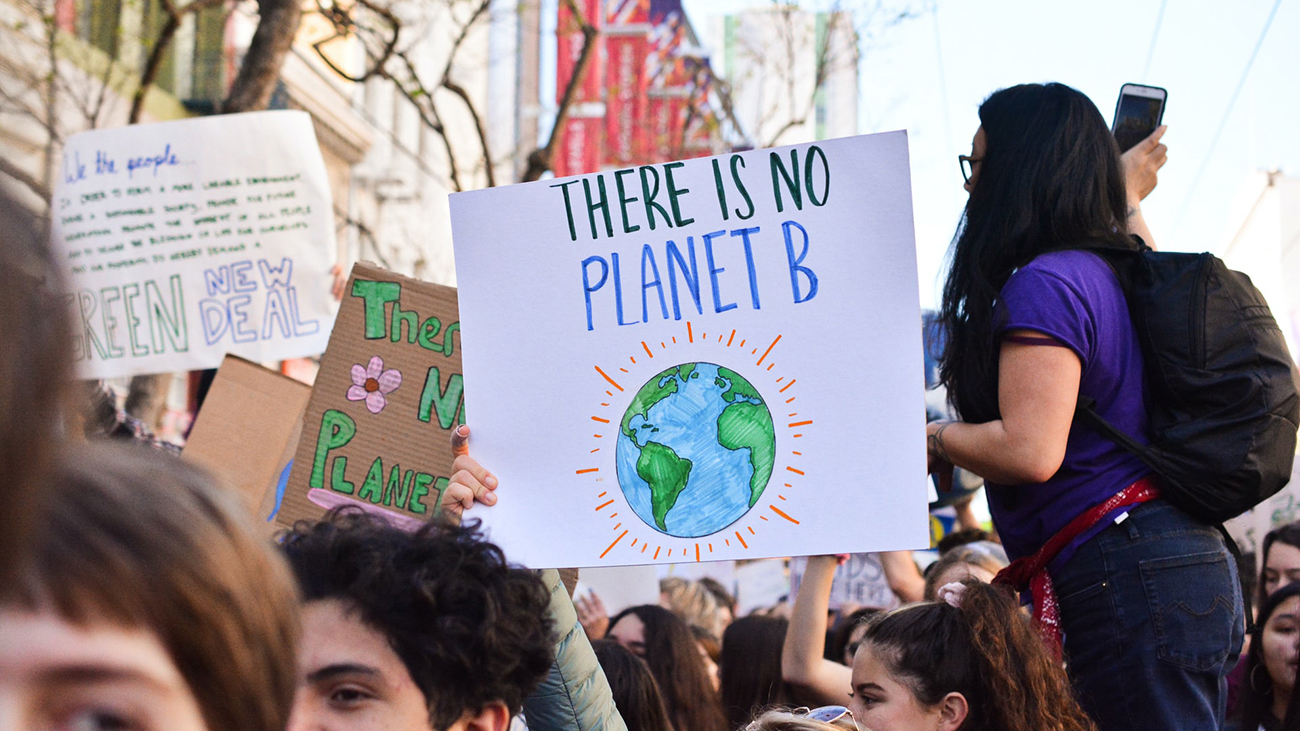Conservation Communication
In an environmental rhetoric course, students get a hands-on lesson in the role effective writing plays in saving the planet.

Words have the power to make change — and English Professor Jason Peters knows that firsthand. As a grad student in New England, Peters ran an arts-based awareness campaign focused on a system of polluted urban ponds, where local residents sometimes found drums full of toxic waste while swimming or fishing. Over two years, he worked on the campaign that eventually increased community support for a legal challenge that got the area cleaned up and transformed into a safe, inviting playground for the neighborhood.
“It was my initiation into the power of the humanities,” he said.
Today Peters teaches the upper-division Cal Poly English course Environmental Rhetoric, which explores how communication skills impact our approach to protecting the environment.
An important part of the class involves getting students to see that the environment is not some remote wilderness detached from their own experience, but rather a network of resources that connects and impacts everyone in every community. During the quarter, students meet with local authorities on a variety of important environmental issues facing the county and visit sites that illustrate those challenges, like SLO Natural Resources Manager Robert Hill.

On a recent field trip, two students from the Environmental Rhetoric course explore San Luis Creek. Photo courtesy of Jason Peters.
“I always felt very separated from my own local environment,” said Sarah Rabbon, a recent English graduate who took the class the first time it was offered in 2020. “I saw places like Yosemite as a place that needs to be protected and forgot about the places where I live. I know it’s not a new idea, but this class definitely was a breakthrough in my own thinking, realizing that where I live is part of the nature that needs protecting.”
Rabbon, who plans to become a teacher, said that the course was one of the most transformative classes she’s ever taken. For one of her assignments, she learned and wrote about Indigenous women in New York protesting against the use of environmental pollutants showing up in the milk of nursing mothers.
“It’s not just that we’re trying to preserve the land — it’s that someone is harming the land and now that is in turn doing harm to those who are trying to live on the land,” Rabbon said. “We learned that you can’t really have an effective environmental justice movement that doesn’t include social justice.”
One of the course’s main projects is a profile of a Cal Poly researcher doing work related to climate action or sustainability. Students can choose from dozens of subjects, ranging from agriculture faculty studying the impacts of plastic on soil to engineering students building experimental solar cars. The exercise is an important step toward not only understanding environmental issues and their solutions, but also being able to effectively pass that information on to others.
“I think we get pessimistic and desensitized to these issues,” Peters said. “But when I meet faculty and students who are working on these issues, it’s actually very exciting because they’re imagining creative solutions to environmental problems.”
I think we get pessimistic and desensitized to these issues, but when I meet faculty and students who are working on these issues, it’s actually very exciting.
Peters wants the writing exercise to teach students how to flex their critical thinking skills. “We need to have a critical awareness over what the issues are and how to read public discourse on environmental issues,” he said.
Nicole Loughran, who took the class this quarter, said this kind of work helps make environmental science more accessible and highlights the human side. “People with a writing background can help make all scientific work more understandable to the public,” she said.
Peters hopes that the course empowers students to use their skills to make a difference in encouraging others to help protect the planet. “I hope that students are able to learn how to communicate scientific concepts to a public audience,” he said. “The environmental movement was shaped by a tradition of great writing and communication work.”
Want to see more stories like this in print? Subscribe now to receive a free copy of Cal Poly Magazine twice a year.


